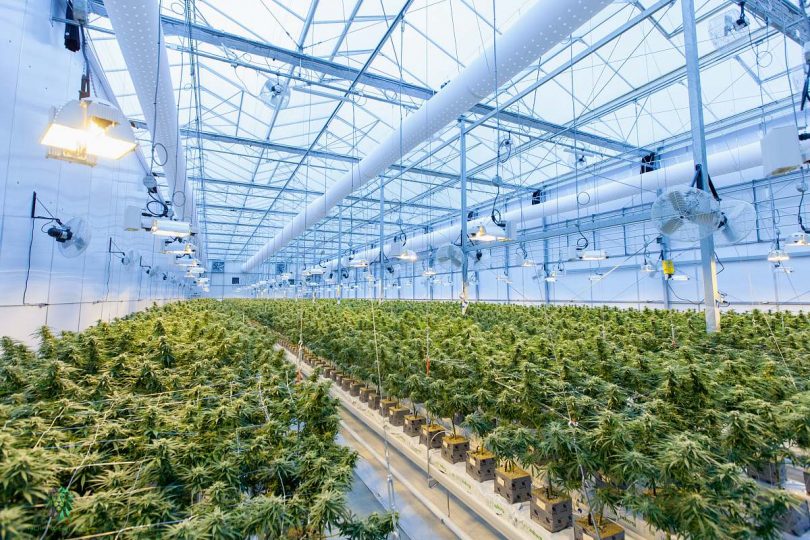Indoor cannabis operations rely on grow lights to stimulate growth. Depending on the size of the room and the number of plants you’re trying to cultivate, different types of lights will work. Here are the three main categories to consider.
Fluorescent Grow Lights
Fluorescent grow lights are popular because they’re relatively inexpensive. They don’t burn a lot of electricity, and the bulbs are cheap and easy to find. You can place the lights close to the plants without burning them, making fluorescents a reasonable choice during the seedling stage when the plants are short.
Another advantage of fluorescents is that it’s easy to find small bulbs (compact fluorescent lamps, CFLs) that can fit in tight spaces like home closets and cabinets. Larger fluorescent tubes known as T5 lights may be more appropriate for commercial growers seeking to supplement their light schemes.
The downside of using fluorescent grow lights is that they’re not ideal for the flowering stage due to low intensity and cool temperature. The yield that you can expect if you use different lighting is significantly higher. Therefore, fluorescent lighting can be used in early growth stages, for supplementary purposes, or for micro-grows.
High Intensity Discharge (HID) Grow Lights
High intensity discharge (HID) grow lights are more efficient and effective than fluorescent lights, but the bulbs are bulkier and less manageable in small or home-based operations. Nonetheless, they have been popular among growers for decades. They include metal halide (MH) and high-pressure sodium (HPS) designs. Growers may use MH lights for vegetative growth (bluer) and HPS lights for flowering (more orange-yellow), or both simultaneously.
HID lights can become very hot, requiring growers to take care of the excess heat. You can use an exhaust fan and vent as well as a hood for the bulb. Though relatively cheap to purchase, HIDs consume the most amount of energy of the lights covered here and require electrical ballasts. Yields are generally considered to be excellent.
LED Grow Lights
Many cannabis growers use light-emitting diode (LED) grow lights in their indoor grow rooms. LED lights can be easier to set up than HID lights in part because heat is less of a problem. Growers often don’t have to worry about setting up a vent or a hood. LEDs are also the most energy efficient grow lights, and newer models can generate the entire spectrum of light. Wavelengths can be dialed in or out according to grower need.
A 2018 study compared LED grow lights to HPS lamps. [1] “Current LED technology showed significant differences in growth habit and cannabinoid profile compared to the traditional HPS light source,” the researchers wrote. The team found HPS yields to be higher, but LED-grown plants had richer cannabinoid profiles.
In a recent interview with Terpenes and Testing, consultant Andrew Lange predicted LEDs to be the future: “I don’t know how anyone will be able to grow with anything but LEDs in five years. In a world where we’re attempting to lower carbon emissions and power usage, we can’t just keep building incredibly power-hungry facilities.”
Image source: Photo Stock Editor
Reference:
- Magagnini G, et al. The effect of light spectrum on the morphology and cannabinoid content of Cannabis sativa L. Medical Cannabis and Cannabinoids. 2018;1(1):19–27. doi:10.1159/000489030. [Impact Factor: 5.764; Times Cited: 21 (Semantic Scholar)]








